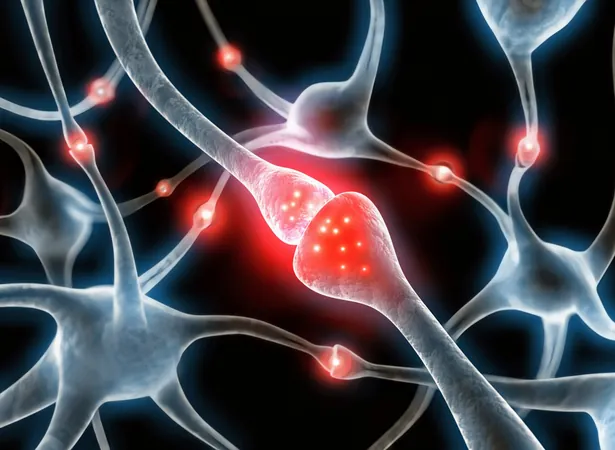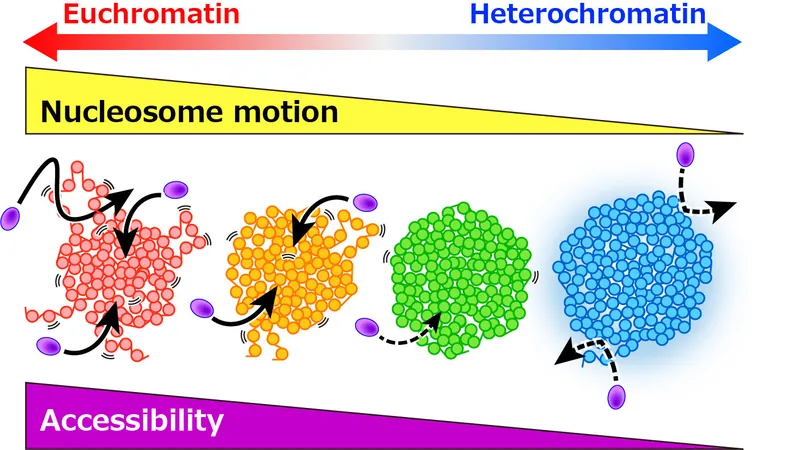
Fueling the Mind: A Revolutionary Map Reveals the Brain's Energy Sources!
2025-03-29
Author: Rajesh
Every thought, emotion, and memory we possess hinges on a vital component: energy. This energy is generated by mitochondria—tiny, bean-shaped structures within our cells that function like the battery of our body. They power everything we do, but when it comes to our brain, the role of mitochondria is paramount.
Despite their importance, knowledge about the distribution and variation of these microscopic energy engines in the brain remains largely incomplete. However, a groundbreaking study by researchers at Columbia University has changed that with the creation of the MitoBrainMap—a detailed visualization of mitochondrial distribution across the human brain.
Dr. Martin Picard, an associate professor of behavioral medicine at the Robert N. Butler Columbia Aging Center, along with his colleague Dr. Michel Thiebaut de Schotten from the University of Bordeaux, spearheaded the initiative. "Energy is increasingly recognized as crucial for health," said Picard. "MitoBrainMap is a pivotal step in comprehending the energetic landscape that underpins brain health, which could lead to tracing the origins of neurodegenerative and neuropsychiatric disorders and innovating treatment approaches."
Unveiling the Brain's Energy Profile
Studying mitochondria within the brain poses challenges. While traditional brain imaging techniques like MRIs provide broad observations, microscopic studies focus only on single cells. The research team devised a method to bridge these perspectives.
Utilizing a frozen human brain, they meticulously sectioned it into 703 tiny cubes, each measuring a mere 3mm on each side—similar in size to grains of sand. In each cube, they assessed both the number of mitochondria and their efficacy in converting nutrients into usable energy, thus constructing an intricate energy profile of that brain slice.
Recognizing the time-consuming nature of analyzing all 50,000 sections of a full brain, researchers employed computational modeling to extrapolate energy distributions across the entire brain, producing a first-of-its-kind energy map.
Diverse Mitochondrial Distribution: A Surprising Discovery
The findings were unexpected. Mitochondrial density and energy production varied significantly, not just based on cell type but also across different brain regions. Anna Monzel, a computational research scientist, highlighted the incredible variations, explaining that while all mitochondria originate from a common source, they adapt during development to fulfill specific bioenergetic requirements unique to their cell types.
Notably, more recently evolved areas of the brain, which are integral to the unique characteristics of human cognition, exhibited a higher density of mitochondria demonstrating increased efficiency. This aligns with the understanding that these regions require more energy to support complex functions.
The Link Between Energy and Mental Function
The MitoBrainMap project is just beginning. Future studies aim to validate and expand these findings. "If our model proves accurate, it could enable assessments of mitochondrial functionality in a living brain via standard MRI scans. This would represent a non-invasive method to explore mitochondrial bioenergetics," remarked Eugene Mosharov, the study's lead author and research scientist in the Department of Psychiatry.
This groundbreaking approach promises to open new avenues in the study of brain energy dynamics in real time, exploring connections with learning, emotional experiences, and even mental disorders.
Enhancing the MitoBrainMap for Greater Precision
Researchers are already at work on MitoBrainMap's second version. They are analyzing samples from 500 individuals across nine distinct brain regions to investigate variations in mitochondrial patterns and their implications for conditions like Alzheimer’s disease and depression.
"Understanding energy as a crucial aspect of biomedicine shifts our perspective on health," expressed Picard. "Questions about energy expenditure in brain healing and the impact of diet on mitochondrial function become paramount."
The Future of Brain Health and Function
MitoBrainMap not only emphasizes the nuances of energy distribution within the brain but also prompts a paradigm shift in how we view mental health and disease. It suggests that energy—often overlooked—may rival anatomical and biochemical factors in influencing brain function.
As researchers continue to refine and expand this map, it could evolve into a vital resource in unraveling the mysteries of brain function and the very essence of being human. The full study is published in *Nature*, paving the way for a new era in neuroscience.
Don't Miss Out! Explore How Energy Shapes Our Lives Today!




 Brasil (PT)
Brasil (PT)
 Canada (EN)
Canada (EN)
 Chile (ES)
Chile (ES)
 Česko (CS)
Česko (CS)
 대한민국 (KO)
대한민국 (KO)
 España (ES)
España (ES)
 France (FR)
France (FR)
 Hong Kong (EN)
Hong Kong (EN)
 Italia (IT)
Italia (IT)
 日本 (JA)
日本 (JA)
 Magyarország (HU)
Magyarország (HU)
 Norge (NO)
Norge (NO)
 Polska (PL)
Polska (PL)
 Schweiz (DE)
Schweiz (DE)
 Singapore (EN)
Singapore (EN)
 Sverige (SV)
Sverige (SV)
 Suomi (FI)
Suomi (FI)
 Türkiye (TR)
Türkiye (TR)
 الإمارات العربية المتحدة (AR)
الإمارات العربية المتحدة (AR)